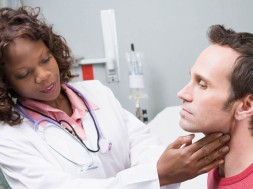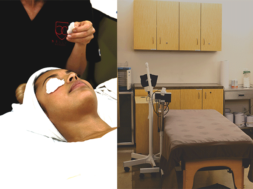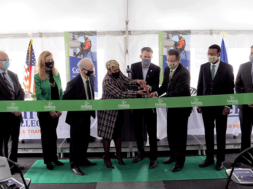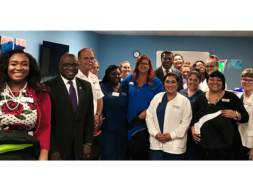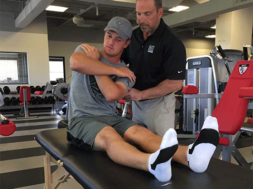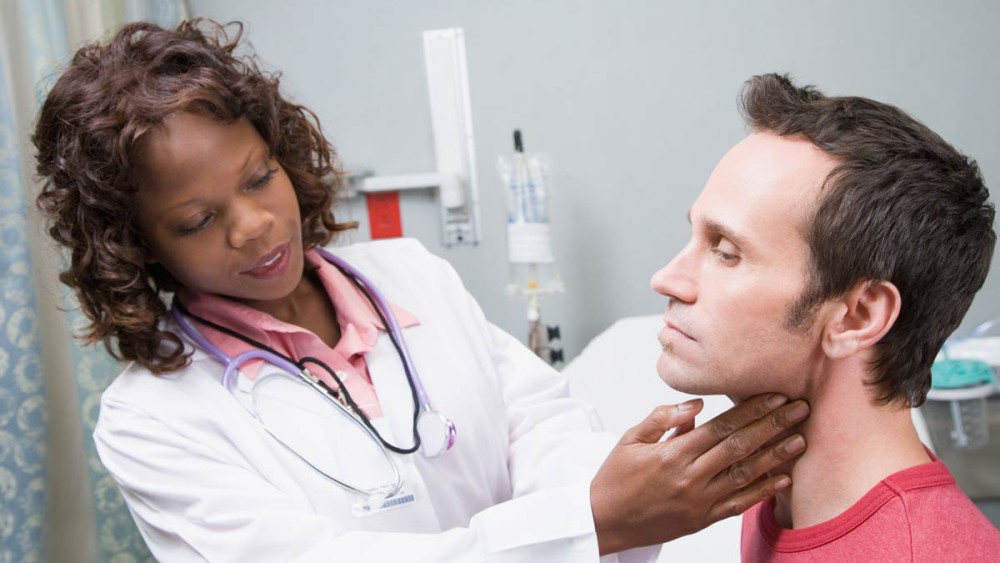
By Janet H. Davis MBA, PhD, RN, Dean of Nursing, Violet Schumacher School of Nursing, Northwestern College
Today, schools with allied health programs face increasing competition for student clinical affiliations. The issues schools are currently facing regarding clinical site availability will pale in comparison to the challenges before us. The continual changes in health care will most likely result in even more mergers of health care systems with reorganized hospitals and physician practices. The increasing shift to “mid level” providers, such as Nurse Practitioners and Physician Assistants, continues and their role in supporting allied health clinical education is unclear. These changes will most certainly impact the traditional volunteer, apprenticeship-based model of clinical training currently in use.
Communication and collaboration between a school’s leadership and clinical practice sites are essential for continued student access.
A Clinical Coordinating Council (CCC) is one way to improve communication, collaboration and continuity with clinical affiliations.
Programmatic accreditation automatically establishes a common link between the health programs at your institution. A united front fosters strong, cooperative relationships with clinical affiliations.
For example, allied health programs at your institution may hold programmatic accreditation from the Commission on Accreditation of Allied Health Education Programs (CAAHEP). The CAAHEP accreditation standard for curriculum requires that seven allied health programs include clinical activities. Those programs are:
- Advanced Cardiovascular Sonography
- Cardiovascular Technology
- Cytotechnology
- Kinesiotherapy
- Lactation Consultant
- Medical Illustration
- Neurodiagnostic Technology
Sixteen other allied health programs have additional and more specific clinical expectations spelled out in the CAAHEP standards. These are highlighted in Table 1.
Table 1. Allied Health Programs’ Clinical Expectations
| PROGRAM | CLINICAL EXPECTATIONS |
| Anesthesia
Technology |
|
| Anesthesiologist Assistant |
|
| Diagnostic Medical Sonography |
|
| Emergency Medical Technician – Paramedic |
|
| Exercise Physiology |
|
| Exercise Science |
|
| Intraoperative Neurophysiologic Monitoring |
|
| Medical Assisting |
|
| Orthotic and Prosthetic Technician |
|
| Orthotist/Prosthetist |
|
| Perfusion |
|
| Personal Fitness Training |
|
| Polysomnographic Technology |
|
| Specialist in Blood Bank Technology/ Transfusion Medicine |
|
| Surgical Assisting
|
|
| Surgical Technologist |
|
CAAHEP standards provide a common framework for your school’s health programs to band together in forming a CCC. In fact, the most important program resource required in the CAAHEP standards is the clinical affiliation. Without clinical sites an allied health program has no practice component and consequently cannot meet the accreditation standard. Because clinical practices generally volunteer to serve as practicum sites, a program essentially has no control over its most important accreditation resource. The CCC offers strategies to build and strengthen successful clinical affiliations.
Communication
The first step in forming a Council is to reach out to your campus leadership and all of the allied health program directors at your school.
It is essential to have institutional executive leadership on board from the beginning in order to legitimize the CCC and gain access to resources.
The CCC is an avenue to overcome clinical barriers including preceptor/site recruitment and cultivation, the student evaluation process and continued preceptor engagement. The Council’s coordinating role will leverage the particular strengths of each degree program, contribute to advisory board development and emphasize mutual accountability for student outcomes.
Invite a very broad group of members to join the CCC. The Council members can include professional and civic leaders in your area, all of the current practicum site representatives for the programs at your school, potential clinical site representatives, all of the campus program directors, staff that process the clinical contracts, current students and program graduates. It is especially important to invite graduates who can open doors to clinical affiliations. Some of your current program advisory board members may be interested in joining the CCC.
Communicate the group’s leadership image starting with the meeting invitation. Language similar to the following will emphasize the importance of the group:
“Congratulations! You have been selected as a founding member of our Clinical Coordinating Council. We value your clinical leadership and hope you can join us for the inaugural Council meeting.”
Another suggested invitation is:
“As a tremendous clinical support in the community we invite you to join our Clinical Coordinating Council.”
If some contacts decline your invitation simply thank them for considering and let them know you hope to follow up with them in the future. If some are hesitant to commit to membership you can suggest they attend meetings as guests until they feel comfortable with the group.
Further communicate the value of the group by having “Welcome Clinical Coordinating Council” signage on campus and reserve parking spaces if at all possible. Recruit students to meet the members at the front door. Students in their clinical uniforms are particularly engaging. If students will be involved, prior to the meeting mentor them in how to introduce themselves, extend appropriate greetings and make introductions.
Have printed name tents so all who are around the table can see who is attending. Critically examine the meeting room to make sure the seating is comfortable and coat racks are available. Make teleconference service available for members who cannot attend the meeting in person. The CCC image should be that this is a welcoming and “first class” group that reflects the quality of your programs.
Allow time for members to network, learn and accomplish tasks when structuring the agenda. Since the Council members are experts in their fields, they will want to contribute to the group’s work. A sample agenda follows:
- 20 minutes – prior to the start of the meeting provide socializing time with light refreshments
- 15 minutes – introductions and review agenda
- 15 minutes – action items/tasks
- 10 minutes – action items/tasks work summary
- 15 minutes – educational program
- 15 minutes – provide networking time following the meeting’s conclusion.
Refreshments can be sponsored by your school or a vendor such as a book publisher or uniform supplier. Include the Council members’ names, titles and contact information as the first tab of the meeting agenda. In addition, insert all handouts and presentations into the agenda booklet. Minutes of the meetings can also be added following each meeting. If possible, have the booklet bound with a title page. These details will communicate the importance of the group members’ participation. Mail a hard copy of the meeting booklet to absent members. This follow-up shows how much each member’s participation is valued.
Ensure the room is reserved for a fairly long period of time, two hours or so, in case members want to stay and network with each other after the meeting is over. Scout out unique locations for your CCC meetings. If your school has a culinary program, you may be able to hold a meeting in the culinary dining room.
At the first meeting a welcoming gesture is to take a group picture of all attending the CCC. The picture can be used to publicize the group on your school’s website and publications. Have a photo release form available if needed. Distributing a small framed group picture for each member at the next meeting is a nice gift. At following meetings a token of recognition could be a school logo notebook, pen or mug. Some schools gift wrap the item using the school colors for an extra flourish.
Collaboration
One of the first tasks the Council can tackle is to define the clinical education terminology used by different programs and propose operational definitions including the clinical experience’s required block of time.
Generating a glossary of terms used by your programs aligned with the terms used by affiliations is useful for clarifying mutual expectations. The following terms are used for clinical education:
- Clinical
- Clinical activities
- Clinical education experience
- Clinical experience
- Clinical externship
- Clinical/field rotations
- Clinical involvement
- Clinical laboratory experience
- Clinical rotation
- External rotations
- Externship
- Field/internship practical experience
- Internal clinical experience
- Internship
- Practicum
- Supervised clinical experience
- Supervised clinical practice.
The required hours or block of time for each clinical program varies. Table 2 gives an overview of the clinical hours required in CAAHEP accredited health programs.
Table 2. Allied Health Program Clinical Requirements
| PROGRAM | CLINICAL HOURS |
| Anesthesiologist Assistant | 2000 total hours 600 total anesthesia cases |
| Diagnostic Medical Sonography | Combined didactic/clinical involvement must not exceed 40 hours per week |
| Medical Assisting | 160 unpaid hours |
| Orthotic and Prosthetic Technician | 120 hours per discipline |
| Perfusion | Minimum of 75 cases at AC-PE approved affiliates requiring cardiopulmonary bypass; minimum of 10 pediatric cases |
| Polysomnographic Technology | Combined total program scheduled didactic/clinical education should not exceed 40 hours/week |
| Surgical Technologist | 120 total cases |
The CCC members can also examine the steps of the different affiliation processes used in the programs and generate ways to improve efficiency and related cost savings. The campus programs can present a comparison of how they:
- Design, revise and modify clinicals to correlate with program outcomes
- Select and approve sites
- Oversee clinical affiliation and preceptor agreements
- Collect student background, drug screen, and health forms
- Assign students to sites
- Provide program orientation for the on-site supervisor and staff
- Ensure sites provide orientation and any special training for students
- Supervise experiences to ensure students meet program outcomes
- Provide evaluation of the quality of student experiences
- Conduct clinical site visits
- Monitor student progress
Discussion and problem-solving might reveal that affiliation agreements can be streamlined or student paperwork and orientations could be handled online. New clinical placements might emerge. For instance an outpatient surgery center may not host surgical technology students but realizes that there is an opportunity for medical assisting student placement.
The educational segment of each meeting can switch between a topic presented by your school and one presented by a CCC member. For example, students might take the members on a tour of the campus labs. Members may have projects or research they want to share.
Continuity
To best meet the members’ needs meetings might need to switch between a breakfast and a dinner meeting. In general, biannual meetings serve the purpose of the CCC. Your core message to the group is: “Our school wants to make sure we are exceeding your expectations.”
The CCC is a resource for annual report input, accreditation site visits and new program feasibility studies.
The CCC will provide your school with a readily available group of experts that program directors can reach out to for advice. The key to keeping the group engaged with your school is consistent, positive contact with the campus leadership. Following a contact schedule makes sure that the CCC members frequently receive a personal “Thank You” message on a routine basis. CCC members can be recognized publicly at pinnings and graduations.
In summary, preparing now for the challenges ahead in securing and maintaining clinical affiliations is a priority for allied health programs. Schools that launch Clinical Coordinating Council will find it provides them with a distinctive image and competitive advantage.

Janet H. Davis MBA, PhD, RN has held the roles of faculty, Academic Dean, Founding Dean, Director of Training & Instructional Design, Director of the Center for Learning Excellence, and Director of Academic Affairs Programs at institutions throughout the Chicagoland and Midwest area. She is a frequent lecturer at local, state and national nursing and healthcare organizations. She has served as a volunteer site visitor for institutional and programmatic accrediting organizations.
Contact Information: Janet H. Davis MBA, PhD, RN // Dean of Nursing // Violet L. Schumacher School of Nursing, Northwestern College // 7725 South Harlem Avenue Bridgeview, IL 60455 // Phone: 708-237-5050 ex 2821 // JHDavis@NC.edu
